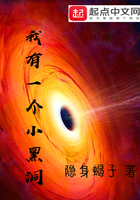Even the idea of one single point of light, contains both these factors, for we must always represent a point in some spacial environment, and also in some direction and at some distance from ourselves. These factors can be separated only through deliberate abstraction, never in reality, for the relation of any point in space to its environment, regularly determines its relation to the ideating subject. As a result of this dependence, the analysis of visual ideas may better start with the location of the elements in relation to one another, and then take up later the location of the compound in regard to the subject. a. The Location of the Elements of a Visual Idea inRelation to One Another.
15. In the apprehension of the reciprocal relations between elements of a visual idea, the attributes of the tactual sense are all repeated, only in a much more highly organized form, and with a few modifications significant for the visual ideas. Here, too, we immediately connect with the ******st possible, approximately punctiform, impression the idea of its place in space; that is, we give it a certain definite position in relation to the parts of space about it. This localization is not effected, however, as in touch, by the [p. 117] direct reference of the impression to the corresponding point of the sense-organ itself, but we project it into a field of vision, which lies at some distance outside of the ideating subject. Here too we have a measure, as in the case of touch, for the accuracy of localization, in the distance at which two approximately punctiform impressions can be just distinguished as spacially different.
The distance is not given in this case is a directly measurable linear extension on the sensory surface itself, but as the shortest perceptible interval between two points in the field of vision. The field of vision may be thought of as placed at any distance whatever from the subject, so that it is best to use as a measure for the fineness of localization, not a linear extension, but an angle, the angle formed by the intersection of the lines passing through the nodal point of the eye, from the points in the field of vision to the corresponding retinal points. This angle of vision remains constant so long as the size of the retinal image is unchanged, while the distance between the points in the field of vision increases in proportion to their distance from the subject. If an equivalent linear distance is sought in place of the angle of vision, it can be found in the diameter of the retinal image. This may be reckoned directly from the angle and the distance of the retina from the nodal point of the eye.
16. The measurements of the keenness of localization with the eye, made according to this principle, show that there is a great difference for different parts of the field of vision, just as was found for different regions of the tactual organs (p. 105). Still, the distances that measure the smallest perceptible intervals here are all very much smaller. Then, again, there are many regions of finer discrimination scattered over the tactual organ, but only one region of finest discrimination in the field of vision. This is the middle, which [p. 118] corresponds to the centre of the retina. From this region towards the periphery the fineness of localization diminishes,very rapidly. The whole field of vision or the whole retinal surface, is, accordingly, analogous to a single tactual region, as, for example, that of the index finger, except that it very much surpasses the latter in fineness of localization, especially at the centre, where two impressions at a distance corresponding to 60" -- 90" in the angle of vision, are just distinguishable, while two degrees and a half toward the periphery, the smallest perceptible extension is 3' 30", and at eight degrees it increases to 1 o .
In normal vision we turn the eye towards objects of which we wish to gain more accurate spacial ideas, in such a way that they lie in the middle of the field of vision, their images falling, accordingly, on the centre of the retina. We speak of such objects as seen directly, of all others, which lie in the eccentric parts of the field of vision, as seen indirectly. The centre of the region of direct vision is called the point of regard, or the fixation-point. The line that unites the centre of the retina with that of the field of vision is known as the line of regard.
If we reckon the distance on the retina that corresponds to the smallest angle of vision at which two points in the centre of the field of vision may be perceived as separate, it will be found to be .004 to .006 mm. This distance is equal to the diameter of a retinal cone, and since the cones are so close together in the centre of the retina that they are in direct contact, it may be concluded with probability that two impressions must fall upon at least two different retinal elements if they are to be perceived as separate in space. This view is supported by the fact that in the peripheral regions of the retina the rods and cones, which are the two forms of elements sensitive to light, are [p. 119] really separated by greater intervals.
It may, then, be assumed that the keenness of vision, or the ability to distinguish two distinct points in the field of vision, is directly dependent on the proximity of the retinal elements to one another, for two impressions can be distinguished as specially different only when they act upon different elements.















